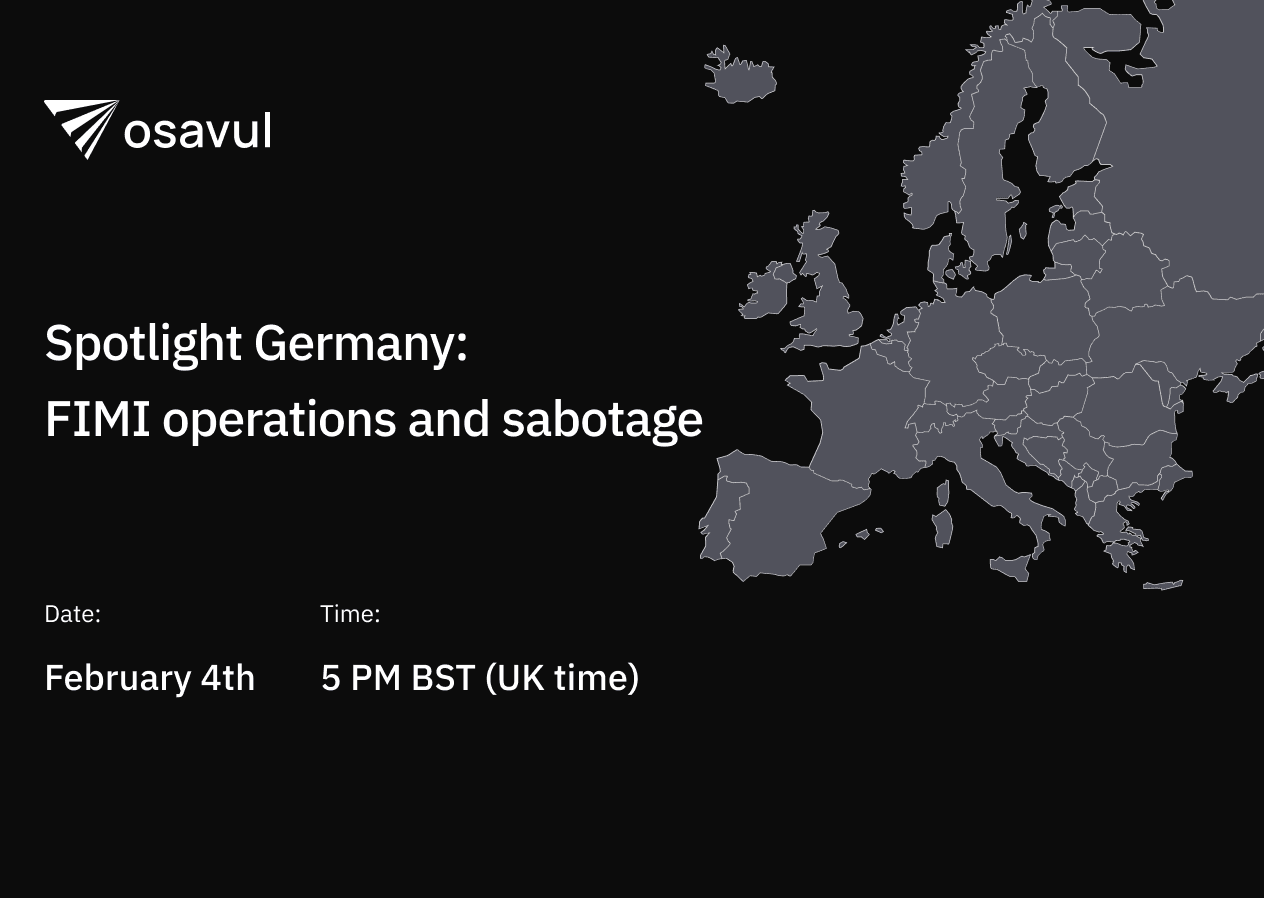Definition and Scope of Russian Propaganda
Current Russian propaganda policy is the deliberate and systematic dissemination of misleading and biased information by the Russian government and its affiliated entities. It aims to manipulate public opinion, shape perceptions, and influence social and political outcomes on the global stage. The propaganda involves anything from half-truths to outright lies and falsehoods that are strategically framed narratives to advance Russian interests.
Global Impact and Challenges Posed by Russian Misinformation Campaigns

The global impact of Russian propaganda can be profound. To date, it has resulted in affecting national elections, exacerbating societal tensions, and undermining trust in honest democratic institutions.
Unlike traditional military campaigns, propaganda aims to sow discord and destabilize an entire society from the inside. Also called hybrid warfare, Russian propaganda makes use of social media and other digital platforms, as well as media outlets, to spread disinformation.
They also commonly target other countries, such as the United States elections and Brexit in the United Kingdom, as well as working to spread political discourse across much of the globe.
The challenges in facing such a threat include the easy way such campaigns adapt, making knowing how to fight propaganda pretty important around the world. Russia uses a scary combination of fake news, deep fake videos, altered images, and many other types of manipulated narratives, with the sole purpose of causing widespread confusion.
People are left wondering what’s true and what’s not, and governments struggle to counteract the misinformation. Officials must know how to fight Russian propaganda to protect the integrity of governments, political figures, and society as a whole.
Russian Government Propaganda
Russian governmental propaganda has deep historical roots dating back to the Soviet era. Soviet propaganda was characterized as state-controlled media that sent an ideological message with the aim of discrediting the West and promoting communism.
In the post-Soviet era, Russian propaganda has developed and adapted to fit the culture of the digital age. There have been extensive reviews to understand the global communication networks to enable modern technology to be leveraged.
Key players in the current landscape of Russian propaganda include state-controlled media outlets such as Sputnik and R. Both are well known for broadcasting Russian perspectives across the globe. These outlets are well supported by a strong network of bots and online trolls designed to amplify the messages and create the illusion that there is large-scale support for pro-Russian narratives.
The Main Strategies of Russian Propaganda
Techniques and Tactics
Authors and instigators of Russian propaganda will employ various techniques and tactics to achieve their malicious goals:
Disinformation Campaigns
This is spreading misleading or completely false information to create an environment of doubt and confusion among a population.
Social Media Manipulation
Fake accounts and online bots are used to attack critics, amplify targeted messages, and generally shape the online discourse in a pro-Russian direction.
Cyberattacks
This refers to the leaking and hacking of sensitive information to influence a political process and/or undermine the trust that a targeted institution has.
Astroturfing
This is the creation of fake ‘grassroots’ movements that are designed to portray a false image of how much public support a policy or organization might have.
Controlled Media
This is the use of state-owned media to broadcast a roster of biased opinion pieces and news to shape sentiment and belief in a certain direction.
Examples of Misinformation Campaigns and Their Effects
One of the most notable recent examples of a major misinformation campaign was the 2014 annexation of Crimea, in which Russian propaganda portrayed the invasion as very much a legitimate cause with the intention of protecting ethnic Russians in the region. This is a narrative that was widely disseminated through social media and Russian state media, to influence international perception and encourage a justification of the actions.
Transformation from Soviet Propaganda to Russian Propaganda
Evolution from the Soviet Era to Present-Day Russia
During the Soviet era, propaganda was primarily focused on the state, and its main goal was to control information, and, as a result, control public perception. At the same time, this era was generally characterized by the larger goal of promoting Communism and discrediting the integrity and values of Western nations. Media used were more traditional, including newspapers, radio, and television.
On the other hand, Russian propaganda has become a great deal more adaptive, making strong use of social media and other digital platforms to spread misinformation. Modern propaganda is far less centralized and is more versatile, with a goal of chaos that undermines Western media, while promoting pro-Russian ideas and ideologies.
The techniques that are employed are much more sophisticated and subtle, blending real information with false information by spreading fake news on social media, using trolls and bots to amplify the confusion, and generally being much harder to combat in today’s modern and digital world.
Key Differences and Similarities
Though both Soviet propaganda and modern Russian propaganda have the aim of manipulating public opinion and advancing geopolitical goals, there is no doubt that the modern practices are more technologically advanced and more decentralized. The increasing use of cyber warfare and social media manipulation showcases a serious evolution in tactics, allowing for a much more rapid and real-time dissemination of narratives.
Combating Fake News and Russian Propaganda
Effective Methods and Tools
The effort to combat Russian propaganda is something that requires a very multifaceted approach, including (but not limited to) the following:
Media Literacy
A push to educate the public, helping them to be able to critically evaluate the information sources that they come across, and to be able to recognize disinformation.
Fact Checking
Reinforcing the habit of independent fact-checking, holding organizations to account to debunk disinformation claims that are made.
Regulation
The implementation of policies that strive to hold social media platforms to account for any disinformation that ends up getting spread across their site.
Technological Solutions
The development and employment of tools that work to detect and then mitigate identified propaganda efforts.
Highlighting Innovative Solutions like OSAVUL’s Russian Disinformation Detection
With the use of innovative solutions like the disinformation detection tool offered by OSAVUL, organizations and individuals alike are able to play a part in the crucial fight against this insidious practice.
OSAVUL employs a series of advanced algorithms and utilizes machine learning to analyze online content and determine whether or not there are disinformation patterns present. These tools have been proven to be massively effective around the world over the years in a wide range of contexts.
Case Studies and Success Stories
Russian Propaganda and the Olympics
OSAVUL tools were able to identify and debunk several fake narratives surrounding the 2024 Olympic games in Paris, France. Russian media set about spreading false information relating to doping scandals and attacking perceived Western biases.
Russian Hidden Racism Vocabulary
OSAVUL tools helped to expose covert racist language that was used in Russian propaganda materials with the intention of subtly influencing public opinion and inciting ethnic tensions without appearing to be overtly discriminatory.
Russian Propaganda in the Hamas-Israeli War
Once again, OSAVUL tools played a key role in identifying various disinformation campaigns that were created with the aim of distorting facts and exacerbating tensions during the onset and continuation of the ongoing Hamas-Israeli conflict.
Conclusion
In summary, it is clear that Russian propaganda continues to be an extremely formidable challenge in the digital age, with increasingly sophisticated tools and techniques being used to influence global populations. Having an understanding of how these practices evolved from the Soviet era through to modern times is absolutely essential in coming up with strategies for developing the most effective countermeasures possible. Combating these modern elements of the threat involves a combination of regulatory measures, media literacy, and, perhaps above all, the integration of innovative technological solutions like OSAVUL’s detection tools.
Vigilance and positive, proactive measures are vital in the mission to protect democracies from insidious influence, and maintaining the integrity of information ecosystems across the globe is a huge step in achieving this.










